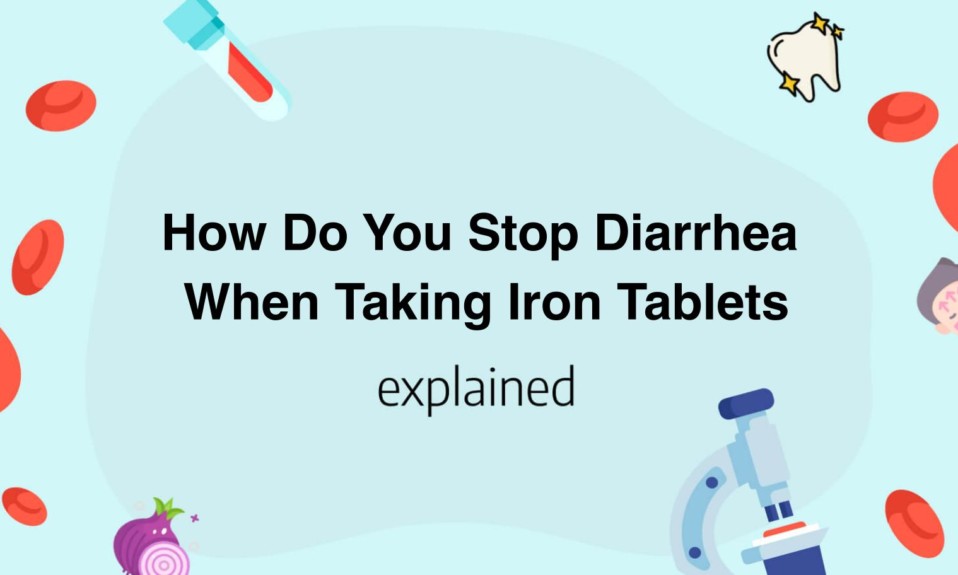Progesterone suppositories are commonly used to support women who are trying to conceive or undergoing fertility treatments.
However, many women wonder, “When can I pee after progesterone suppository?” This concern arises because some women may experience leakage or discomfort after inserting the suppository.
In this article, we will discuss what you need to know about peeing after using progesterone suppositories and offer some tips for reducing any discomfort you may experience.
- It is safe to pee immediately after inserting the progesterone suppository.
- However, it is recommended to wait at least 30 minutes before peeing to allow the suppository to dissolve and be absorbed.
- If you can hold your pee for an hour or two after inserting the suppository, it will increase its effectiveness.
- If you need to pee before the recommended time, trying to hold the pee as much as possible is advised.
- The timing of peeing after progesterone suppository may vary depending on an individual’s body and the dosage of the medication.
Why Waiting is Important After Progesterone Suppository
After using a progesterone suppository, it is important to practice patience and wait before engaging in intercourse or even standing up.
While every woman’s body may react differently, it is typically recommended to wait at least 30 minutes to an hour before engaging in any activity that could cause the suppository to dislodge or absorb improperly.
Failure to wait could lead to a decrease in effectiveness, reducing the chances of becoming pregnant or maintaining a healthy pregnancy.
The waiting period is important for several reasons.
First and foremost, the suppository needs time to be absorbed by the body and travel to the necessary areas in order to do its job.
Depending on the dosage and type of suppository, it may take some time to fully dissolve and absorb.
Second, engaging in any activity that could cause the suppository to dislodge could also lead to discomfort or irritation of the vaginal area, putting a damper on the overall experience.
For couples trying to conceive, it can be particularly tempting to rush into things after using a suppository, especially if they are eager to maximize their chances of becoming pregnant.
However, patience is key, and failing to wait could actually decrease their chances of success.
It is also important to remember that every woman’s body is different and may react differently to suppositories, so it is always a good idea to consult with a healthcare provider regarding specific guidelines and recommendations.
In summary, the waiting period after using a progesterone suppository is crucial to ensuring its effectiveness and avoiding any discomfort or irritation.
Women should wait at least 30 minutes to an hour before engaging in any activity that could dislodge or absorb the suppository improperly.
By practicing patience and following these guidelines, women can increase their chances of becoming pregnant and maintaining a healthy pregnancy.

The Risks of Peeing Too Soon After Progesterone Suppository
Peeing too soon after using a progesterone suppository can increase your risks of ineffective treatment.
One of the primary side effects of a progesterone suppository is vaginal discharge.
When inserted, the suppository is absorbed by the body and the discharge is a result of the excess progesterone in the body.
If you pee too soon after the insertion, you may accidentally expel the suppository before it can be fully absorbed, thus rendering it ineffective.
It is recommended to wait at least 30 minutes to an hour before urinating.
This ensures that the suppository has had enough time to be absorbed by the body.
It is important to remember that each manufacturer may have slightly different guidelines, so it’s always best to read the instructions carefully before use.
In addition to increasing the risk of ineffective treatment, peeing too soon after using a progesterone suppository can also increase the risk of bacterial infections.
The insertion process can introduce harmful bacteria to the vaginal area, and peeing too soon after can further spread those bacteria to the urinary tract.
This can lead to painful urinary tract infections (UTIs) that require medical treatment.
It is important to maintain good hygiene before and after use of a progesterone suppository.
This includes washing your hands thoroughly before insertion and avoiding sexual intercourse during use to prevent introducing additional bacteria.
In conclusion, the risks of peeing too soon after using a progesterone suppository can have serious consequences on your health and the effectiveness of the treatment.
By waiting at least 30 minutes to an hour and maintaining good hygiene, you can reduce your risks of complications and improve your chances of successful treatment.
How Long Should I Wait Before Peeing After Progesterone Suppository?
After using progesterone suppositories, many women may wonder how long they should wait before urinating.
The general recommendation is to wait at least 30 minutes before emptying the bladder to allow the suppository to fully absorb.
It is important to follow the instructions provided by your healthcare provider regarding the use of progesterone suppositories and other medications.
It is also important to wash your hands before and after inserting the suppository to prevent infection.
If you do have to urinate before the recommended time has passed, it is recommended to avoid straining or putting pressure on the vaginal area as this may dislodge the suppository.
It is also important to note that the effectiveness of the suppository may be reduced if it is expelled from the body too soon.
Progesterone suppositories are commonly used during fertility treatments, pregnancy, and menopause.
They are typically used to support uterine lining growth and pregnancy, relieve menopausal symptoms, or treat infertility.
However, it is important to remember that each woman’s body is unique and may respond differently to progesterone treatment.
Always consult with your healthcare provider if you have any questions or concerns about using progesterone suppositories or any other medication.
In summary, the general recommendation for how long to wait before urinating after using a progesterone suppository is at least 30 minutes.
It is important to follow the instructions provided by your healthcare provider and to take proper precautions to prevent infection and ensure the effectiveness of the medication.
Remember to consult with your healthcare provider if you have any questions or concerns.
When Can I Pee After Progesterone Suppository
Progesterone suppositories are often prescribed to women during infertility treatments or other medical conditions.
It is common for women to wonder when they can pee after using progesterone suppositories.
While there is no specific timeframe that applies to everyone, there are some general guidelines to consider.
First and foremost, it is important to note that progesterone suppositories are inserted vaginally, not through the urethra.
As a result, using the bathroom will not affect the effectiveness of the medication.
However, going to the bathroom too soon after inserting the suppository may cause it to leak out before it has a chance to fully dissolve.
It is recommended to wait at least 20-30 minutes after inserting the suppository before using the bathroom.
This will give the medication enough time to absorb and reduce the risk of losing any of the suppository.
If possible, waiting longer is even better.
Additionally, it is important to clean the vaginal area carefully after using the bathroom to avoid any contamination that could interfere with the medication’s effectiveness.
Using a gentle, pH balanced, and fragrance-free soap is recommended.
It is worth noting that some women may experience side effects from progesterone suppositories, such as vaginal discharge or irritation.
In these cases, it may be necessary to use a panty liner or change underwear more frequently.
If symptoms persist or worsen, it is important to consult with a healthcare provider.
In summary, it is recommended to wait at least 20-30 minutes after inserting a progesterone suppository before using the bathroom.
Cleaning the vaginal area carefully after using the bathroom is also important.
By following these simple guidelines, women can ensure that they get the maximum benefit from their medication without compromising their comfort.
You’ll also like: Is Bowel Leakage A Sign Of Cancer
Tips on How to Avoid the Urge to Pee After Progesterone Suppository
When taking progesterone suppositories, it is common to experience the urge to pee.
This can be uncomfortable and inconvenient, especially if you are unable to leave the house or work.
Fortunately, there are several tips you can follow to help avoid this urge.
- Empty your bladder before inserting the suppository.
This may seem obvious, but it is an important step.Make sure you have completely emptied your bladder before inserting the suppository to minimize any pressure on your bladder.
- Insert the suppository while lying down.
This position can help the suppository stay in place and reduce the pressure on your bladder.After inserting the suppository, stay lying down for a few minutes to allow it to fully absorb.
- Avoid drinking too much liquid before inserting the suppository.
Drinking large amounts of liquid can cause your bladder to fill up quickly, making it more difficult to avoid the urge to pee.Instead, drink small amounts of liquid throughout the day to stay hydrated without putting too much stress on your bladder.
- Wear loose clothing.
Tight clothing, especially around the waist and hips, can put pressure on your bladder and make the urge to pee more intense.Opt for loose, comfortable clothing to avoid exacerbating this problem.
Remember to follow these tips consistently to reduce the urge to pee while using progesterone suppositories.
By using these methods, you can minimize any discomfort and inconvenience associated with this medication.
You’ll also like: Iritis Vs Conjunctivitis
Potential Side Effects of Progesterone Suppository and Urination
The use of progesterone suppositories is a common treatment for women undergoing fertility treatments or those with low progesterone levels.
While the treatment is generally safe, it’s important to be aware of potential side effects, such as vaginal irritation or discomfort.
This is due to the fact that the suppositories can cause irritation to the vaginal wall, leading to discomfort and even pain.
Additionally, some women may experience spotting or bleeding as a result of the treatment.
This is particularly common in the early stages of pregnancy, and should be reported to a doctor immediately to rule out any complications.
One potential side effect that is often overlooked is the impact on urination.
Some women may experience difficulty urinating while using progesterone suppositories.
This can be attributed to the fact that the suppositories can affect the muscles in the bladder, making it harder to fully empty the bladder during urination.
In severe cases, this can lead to urinary tract infections or bladder discomfort.
To minimize the risk of urinary discomfort while using progesterone suppositories, it’s important to drink plenty of fluids throughout the day.
This will help to flush out your bladder and prevent the buildup of bacteria that can lead to infections.
Additionally, some women find that performing kegel exercises can help to strengthen the muscles in the pelvic region, reducing the risk of urinary issues.
If you experience any uncomfortable side effects while using progesterone suppositories, it’s important to speak to your doctor right away.
They can help to assess your symptoms and determine if any adjustments to your treatment plan are necessary.
By staying informed and proactive about your health, you can ensure the best possible outcome for your fertility treatment journey.
You’ll also like:









